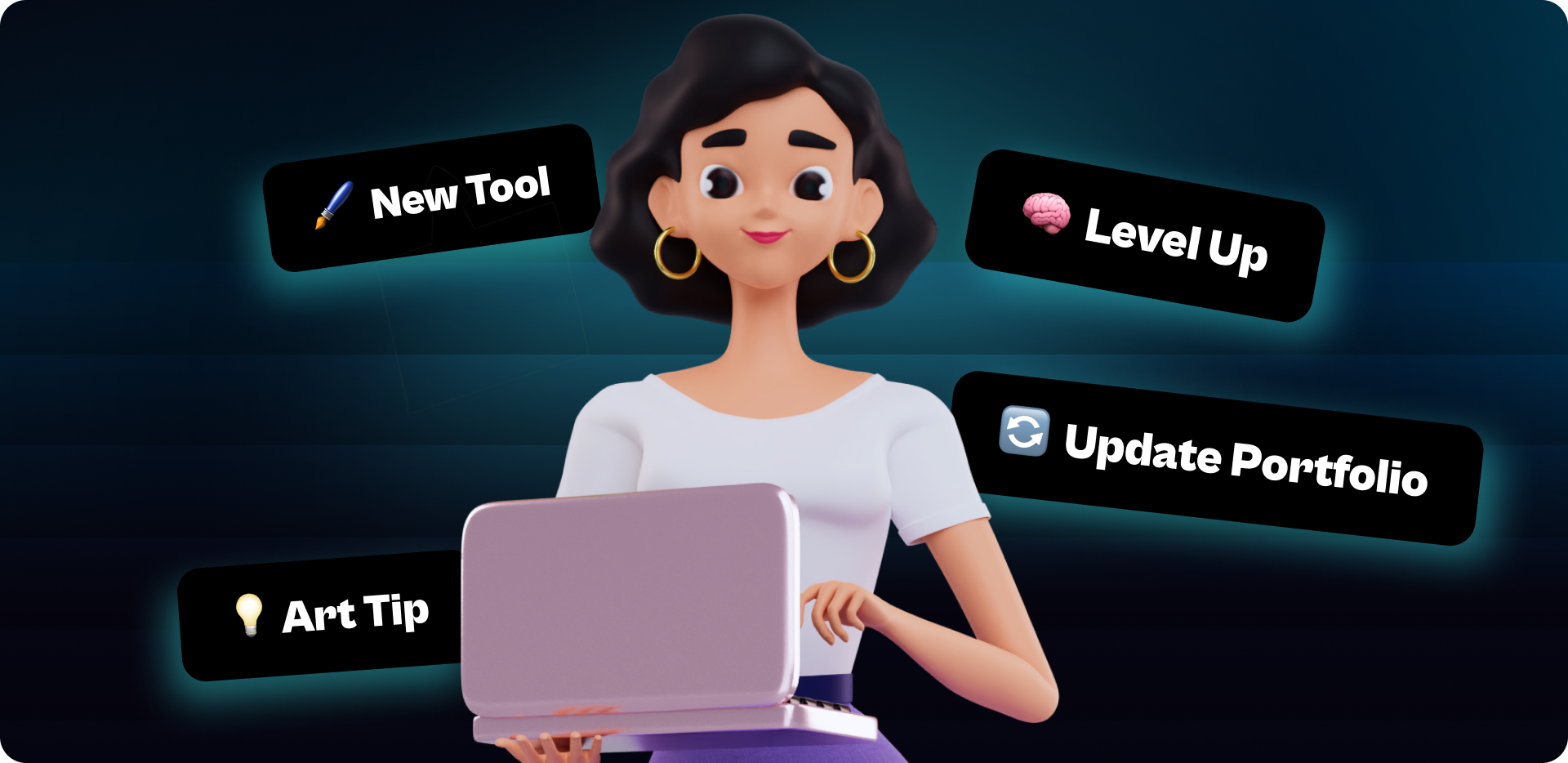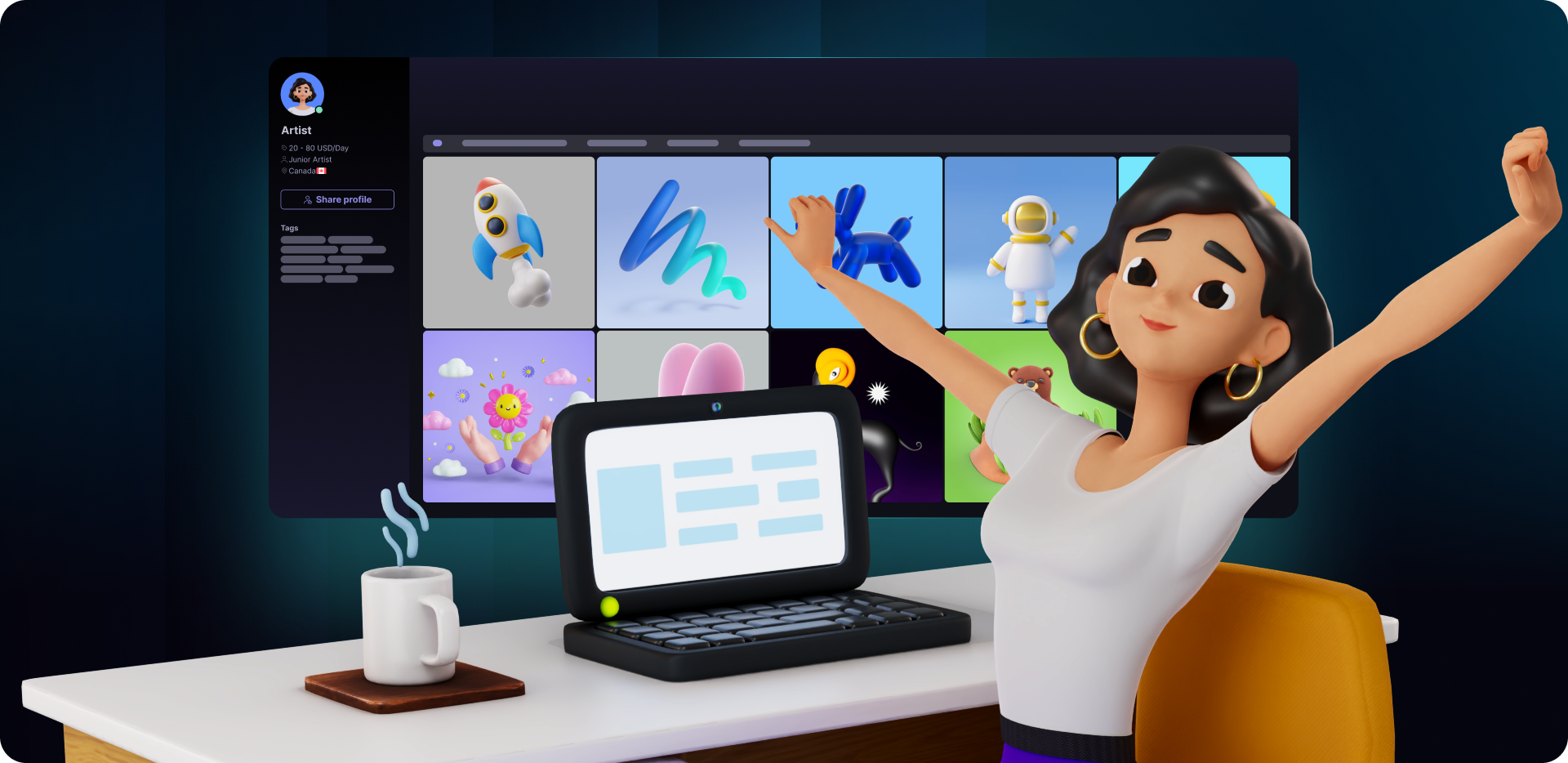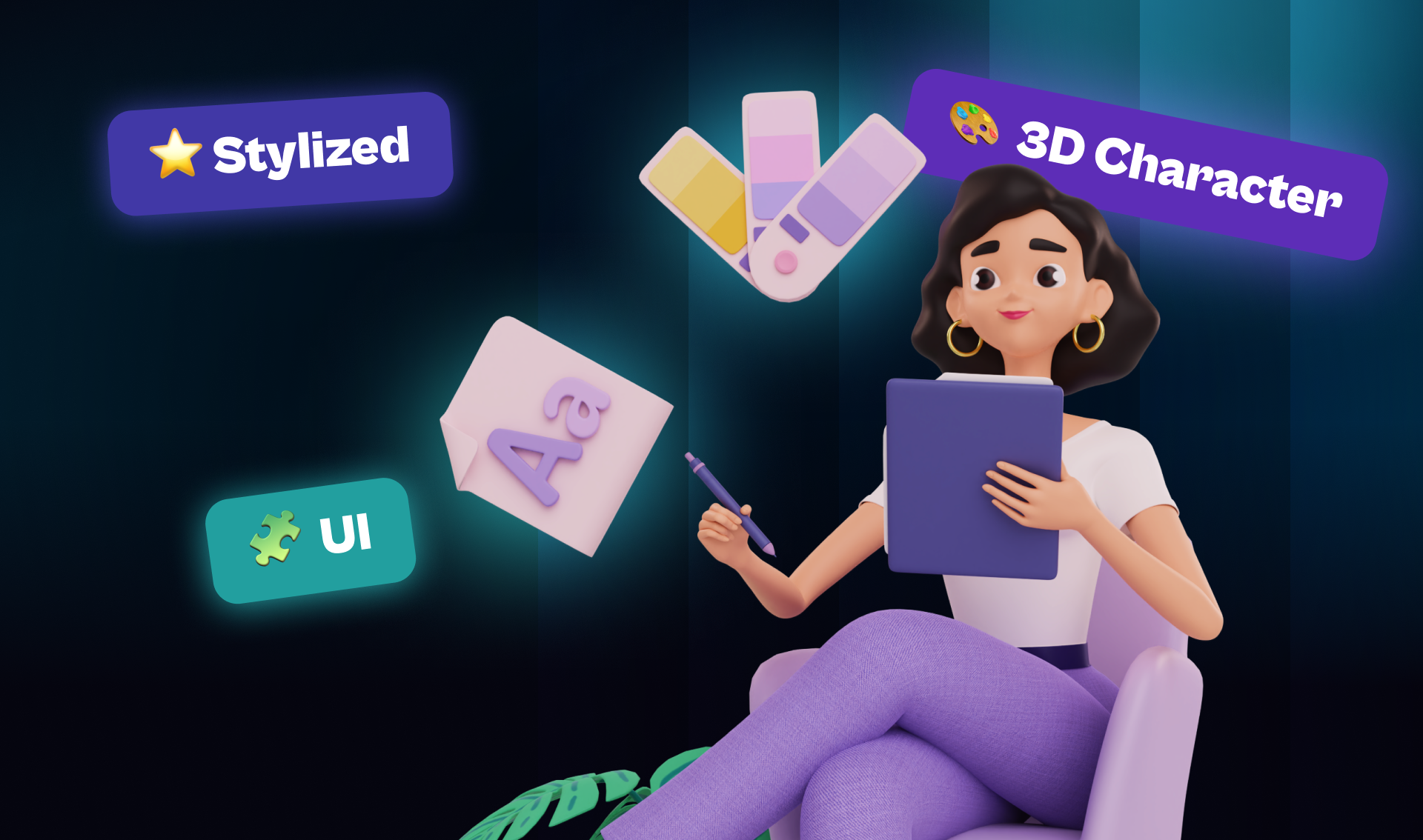The game art industry is full of incredible talent, and standing out can feel like a big challenge. With so many artists showcasing their work, how can you make sure yours gets noticed? The key is your game art portfolio. It’s not just about the artwork you create, but also how you present it and communicate your skills, experience, and style. A well-organized and thoughtfully crafted portfolio can make all the difference.
We know how important a strong game artist portfolio is to your success. That’s why we’ve put together this guide to help you build a portfolio that not only showcases your talent but also helps you stand out in a crowded market
Stay Up to Date, Keep Learning, and Continue Growing with the Industry
The game art industry is always changing, and keeping up with the latest trends, tools, and techniques is more than just important. From using new 3D modeling software to learning the latest art trends in game design, staying up to date shows that you’re committed to improving yourself as an artist.
At Fusion, we make it easy to keep learning. We host regular events, workshops, and webinars that are specifically designed for artists just like you. By participating in these events, you not only get the chance to learn new skills but also connect with other artists. And we’re all about supporting each other.
After learning something new, update your portfolio! Add recent artworks, highlight new skills you’ve developed, or include pieces from new art challenges on social media. This shows that you’re always improving, which is something potential employers really appreciate.

Communication Is Key: Show Off Your Soft Skills
A great game art portfolio does more than just show off your art, it also highlights your ability to communicate, collaborate, and work well with others. These soft skills are what make you a valuable team member.
As you build your portfolio, be sure to include details about how you work. Share how you collaborate, accept feedback, and tackle challenges. These qualities matter just as much as your artistic skills.
For each project, add a brief description explaining what you did, the challenges you faced, and how you approached them. This gives potential clients or employers a look into your problem-solving abilities and creative process.
When sharing your work, try to tell the story behind each project. If you worked with a team or overcame a tricky problem, this shows not only what you’ve created but also how you think and approach challenges.
Self-Promotion is More Important Than You Think
At Fusion, we believe self-promotion is essential for getting your art noticed. Putting your work out there is the first step to making sure your talent reaches the right audience. We know that in a competitive industry like game art, if your work stays hidden, it won’t get the attention it deserves. That’s why we think it’s so important for artists to share their creations and expose their passion to potential employers and clients.
We make self-promotion easy. With our ‘Share Your Artist Profile’ feature, you can create a sleek, professional artist profile and share it with just a click. This allows you to showcase your best pieces in a way that reflects your style and skills. By getting your work out there, you’re not only sharing what you can do but also demonstrating your commitment to your craft, making it easier for the right people to find and appreciate your art.
At Fusion, we want to support you in getting your talent the attention it deserves.

Tailor Your Portfolio to Match Your Passion
In our Get Hired Episode 10, Billy Ahlswede, an art lead at Elodie, shared some helpful advice for building a standout game art portfolio. One of the first things Billy suggests is to “tailor your portfolio to match what you want to work on.” This means you should focus on the type of projects you’re passionate about and want to pursue in your career. If you dream of working on stylized characters or fantasy worlds, make sure your portfolio reflects that style and direction.
Billy also stresses the importance of showing your characters’ personality, “If you can’t tell what the character’s thinking from this piece, you probably spent more time on it.” This is key. Artwork that brings characters to life, showing their emotions or thoughts, makes them feel more real and relatable to the viewer.
Billy also shared that having a broader skill set can make a big difference. “If you’re a character artist who also understands 3D modeling or has experience with tools like Unreal Engine, that’s a huge advantage.” This is a great way to show your versatility as an artist. Being able to work with different tools and skills can make you more adaptable in the game development process.
So, when creating your portfolio, focus on showcasing your skills, personality, and how well you understand the role your art plays in the broader gaming experience.
Add Some Extra Touches to Make Your Portfolio Stand Out
So, what else can you do to make your portfolio stand out? Here are a few ideas:
The more you can show about your process and creativity, the better.
Organize and Share Your Portfolio with Fusion
Building a game art portfolio that stands out in a crowded market takes time and effort, but it’s one of the most important steps you can take to further your career. By staying current, highlighting your soft skills, organizing your work effectively, and promoting your strengths, you can create a portfolio that not only shows off your talent but also positions you as a professional in the field.
Fusion’s Share Portfolio feature is designed to help you organize and present your work in the best possible way. With easy-to-use tools that allow you to showcase your portfolio professionally and share it with just a click, Fusion helps you take your career to the next level.
Ready to make your portfolio shine? Organize your portfolio on Fusion today and start sharing it with the world. It’s time to stand out and get noticed!

